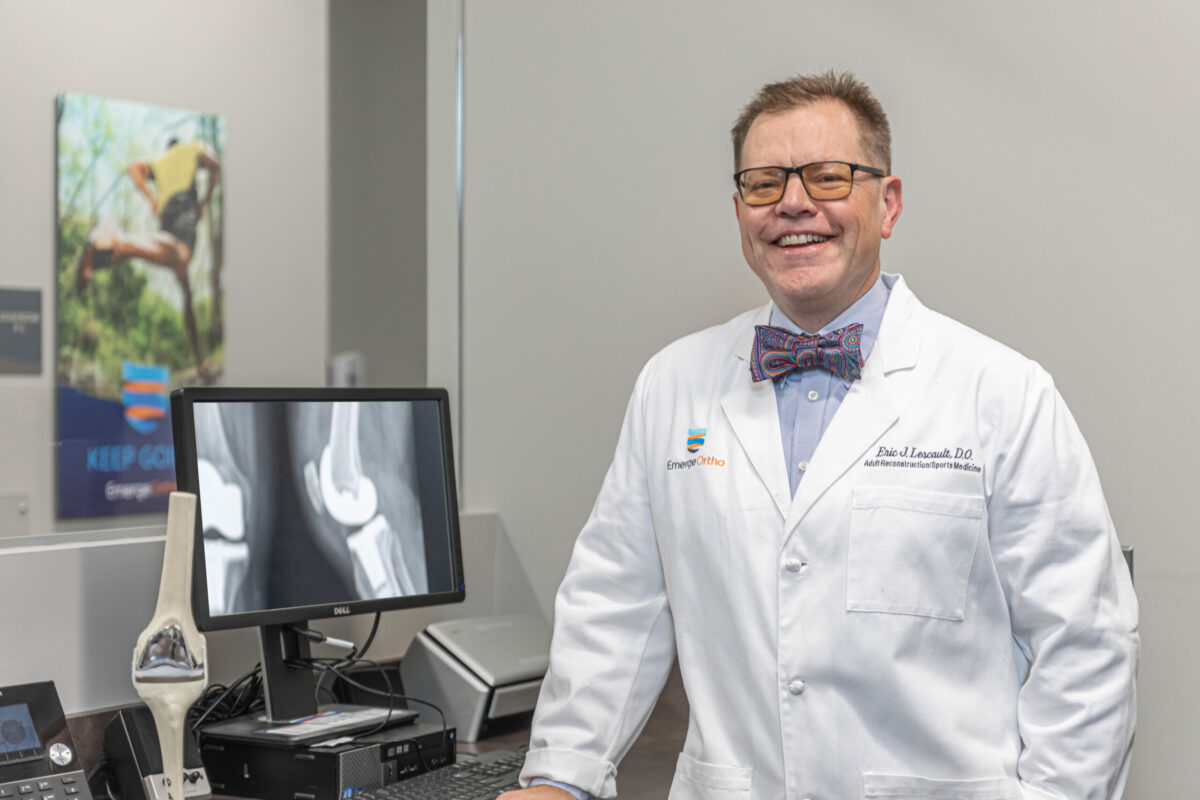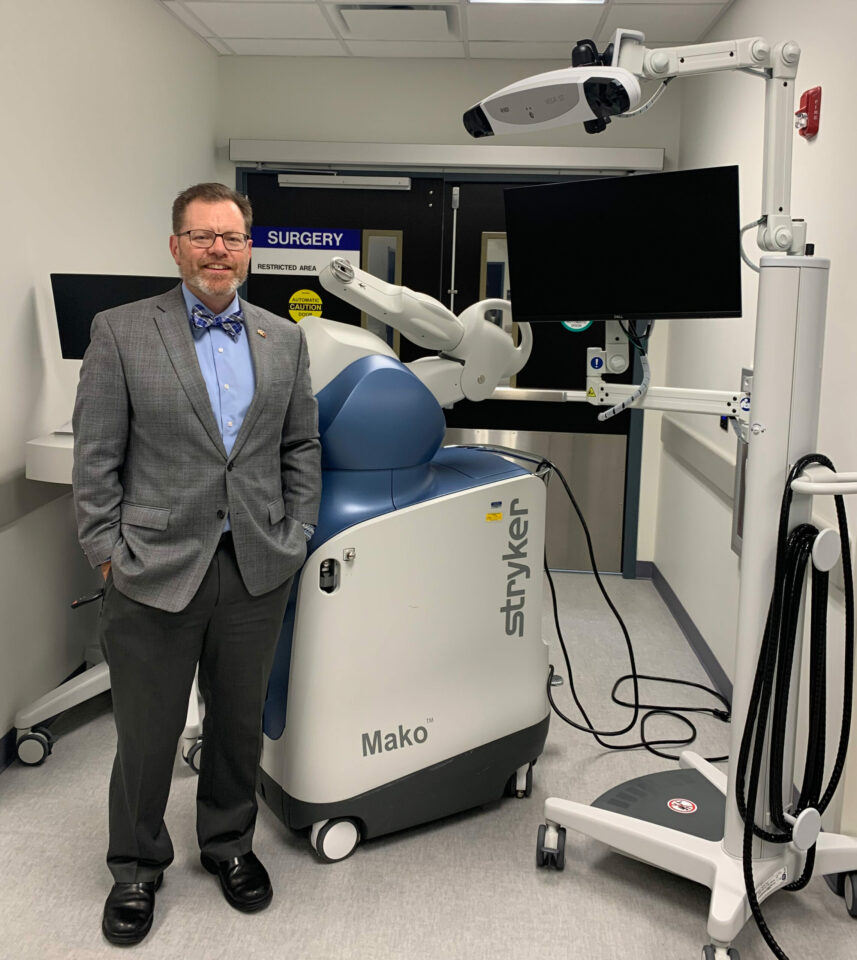
A highly skilled hip and knee specialist with EmergeOrtho’s Coastal Region, Eric Lescault, DO, started robotic joint replacement in the Brunswick County area with total and partial knee replacement. Noting the improvements in patient outcomes, he quickly adopted the total hip application in the winter of 2022 and this fall has passed a milestone and completed his 1,000th robotic case.
“We started the robotic joint replacement program with just knees,” said Dr. Lescault. “Our patients’ experience was so successful, I expanded the program one year later with the total hip application.”
The program has been adopted and expanded to all the surrounding facilities. Currently, 14 of EmergeOrtho’s joint replacement surgeons do robotic knee replacements; Dr. Lescault and a number of other EmergeOrtho Coastal Region joint replacement specialists also offer robotic hip replacement.
The Numbers Tell the Story
Total and partial knee arthroplasties account for 75% of the practice’s robotic joint replacement surgeries, with total hip arthroplasty making up the remaining 25%. Of the knee surgeries, 93% are total knee.
As of fall 2023, the total number of robotic joint replacements (including total knee, partial knee, and total hip) performed by the EmergeOrtho surgeons in the coastal region was 2,203, accounting for more than 86% of all 2,555 joint replacements done in the practice, year to date.

Dr. Lescault with the MAKO Robotics System at Brunswick Surgery Center
The Benefits of Robotic Surgery
The robotic joint replacement program in the coastal region came from a desire to bring more advanced technologies to EmergeOrtho patients in southeastern North Carolina.
“We wanted to bring robotics here, so patients don’t have to travel for it,” he said. “Thanks to greater transparency in healthcare, anyone can review the data and confirm that we get the same, if not better, outcomes like more well-known medical systems in larger markets. There really is no reason to go outside the region.”
Dr. Lescault said the literature demonstrates that patients are very comfortable and will seek a surgeon who has embraced robotics because they understand how advanced technology has improved other areas of life: communication, aviation, and industry, for example.
The advantages of robotic-assisted surgery are numerous; one primary example is the increase in the alignment of the component to the patient’s specific anatomy.
Additionally, robotic surgery provides for a more stable implant, less scarring, lower narcotics use, faster return to function, and overall faster recovery. 95% of patients go home the same day.
Robotic surgeries are time-neutral compared to conventional approaches. The technology, dependent on the system, allows the surgeon to map out that patient’s specific needs in advance. This virtual surgery allows for accurate sizing and initial component placement. Dr. Lescault compares it to a pilot flying with radar.
“As a surgeon, you have additional peace of mind because you already know what is there,” he explained. “If a patient has had previous trauma like fractures or has existing hardware, for example, we know ahead of time if those implants will interfere with the total knee or hip.” He said surgeons may not have to take out an existing implant like they often do with conventional surgeries; these factories correlate to less surgical time, less instrumentation, less scarring, and a lower risk of infection.
Dr. Lescault is quick to point out that the data shows three years after the surgery there is no difference in the outcomes of conventional versus robotic joint replacement. He said the long-term data is not yet available to conclude any superior approach, but the Australian total joint registry released a study that revealed at 3 years following primary conventional total knee replacement, the revision rate was elevated at 3.7%. The same end point with robotic-assisted total knee replacement was only 0.9%.
“From a personal and population health standpoint, this decrease in revision rates is a significant impact,” he stated.
The Future is Robotics
Looking back over the past two and a half years, Dr. Lescault is enthusiastic about trends in robotic joint replacement across the region.
“It’s been an incredible journey,” he said. “Some surgeons who were initially recalcitrant about adopting it now eagerly embrace it. They enjoy the significant advantages for the surgeon, as well as the patient.”
Dr. Lescault said there are four robotic surgery systems utilized in our region for joint replacements and surgeons tend to be vendor loyal. He primarily uses the MAKO and is also certified on the ROSA.
“We have purchased a second MAKO robot for Brunswick Surgery Center because of demand,” he said. “We want to be ready and able to meet the needs of our region.”
As for his 1,000th robotic joint replacement patient, Dr. Lescault reports that the very active male in his late 50s is now back to playing golf and riding his motorcycle. Mission accomplished in EmergeOrtho’s goal of helping patients emerge stronger, healthier and better.
Self-Schedule Your Appointment








